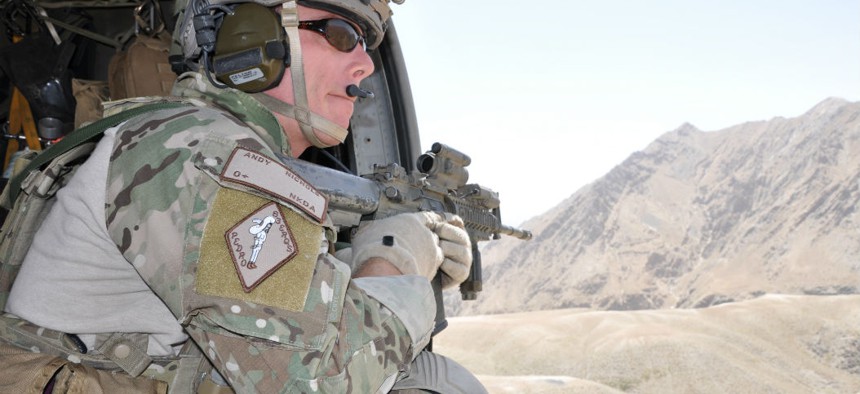Next-gen handheld radio can help save downed pilots lives
General Dynamics just released an upgraded radio for downed pilots to send rapid and secure GPS data to rescuers.
For pilots downed in hostile areas, rescue is often a matter of being found by friendly forces before being detected by unfriendly ones. The new HOOK3 Combat Survival Radio allows pilots to signal their location more effectively and with less chance that their communications will be intercepted.
The HOOK3 uses enhanced GPS technology to rapidly transmit the location data of the operator securely. According to General Dynamics, developer of the radio, it has 32 different signal channels. The redundancy guarantees that at least one signal will be detected within a short time frame and raises the chances that at least one will be detected in obstructed environments, such as forests or near large structures.
However, the density of signals emitted by the HOOK3 make it just as easily detectable by hostile groups as by search and rescue teams. To help reduce this risk, the HOOK3 is designed to emit these GPS signals in short encrypted bursts, according to General Dynamics.
The next generation GPS encryption frequency is known as m-code. It is a military specific signal that uses split spectrum modulation, meaning that most of the signal power is relayed near the edges of the designated bandwidths using a 10.23 MHz square wave subcarrier. Security of m-code signal is ensured by advanced cryptography and new keying architecture, according to a joint militaryindustry report lead by the Air Force GPS Joint Program Office.
Aside from GPS signals, the radio can also send identification data, situation reports and other information to the rescue teams.
The HOOK3 also has the ability to automatically activate when it detects abnormal G-force levels or saltwater, such as during an emergency aircraft landing, according to General Dynamics. Along these lines, the radio is able to survive being submersed in deep water for 15 minutes, and shallow waters of up to three feet for a full 24 hours, according to the press release.
"The HOOK3 provides military personnel in emergency situations a highly reliable, easy-to-use, secure radio critical to their successful recovery," said Paul Parent, Vice President of General Dynamics Mission Systems. The new edition is still compatible with the software and hardware of the HOOK2 radio. The HOOK3 software architecture is designed so that it can easily be upgraded with new waveforms or software, explained General Dynamics.
The final development introduced with the HOOK3 is reduced size and weight. According to a General Dynamics spokesperson, the HOOK3 is 30 percent smaller and 40 percent light than its predecessor. This means that pilots can carry the HOOK3 by itself with no extra equipment, or simply hook it to their uniforms. Much more efficient battery life means that it can provide location data to search teams for longer.
There are no statements yet as to whether the military is planning on purchasing the HOOK3.
NEXT STORY: MDA leaders work on new sensor for THAAD




